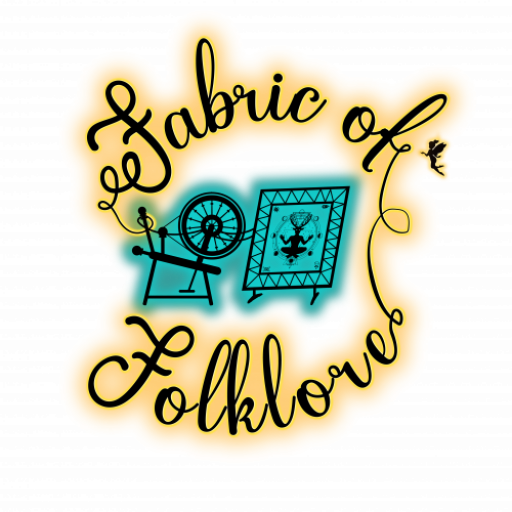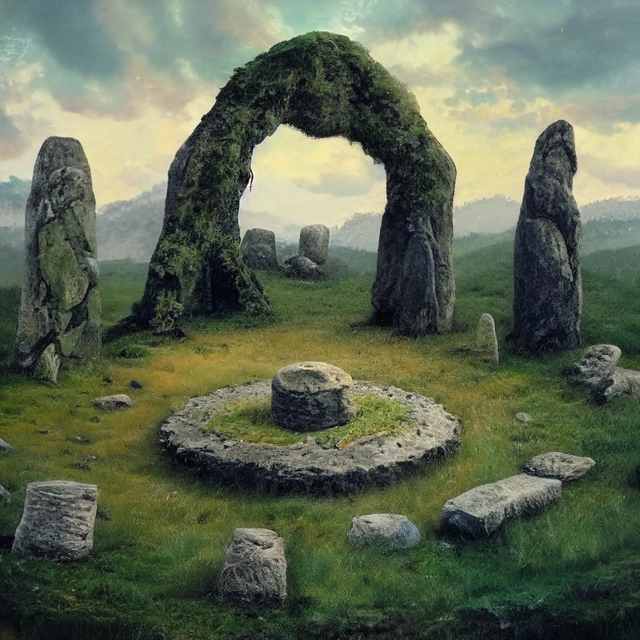Folklore of the Stones: Men-An-Tol
The Men-An-Tol standing stones appear to sit lonely on a Cornish moor not far from Land’s End and the town of Penzance. They were once part of a much larger prehistoric landscape and like similar aged monuments they have attracted their share of speculation as too their origins and of course folktales.
These days the Men-An-Tol consists of two upright granite pillars facing each other and between them is a large granite ring big enough for a person climb through. It has been suggested that this arrangement of the stones may not be original. The granite pillars may have been part of an assemblage of pillars set out in the shape of a circle as is common with sites from the early to middle Bronze Age. What isn’t common and almost unique is the central doughnut shaped stone that may have been placed in the centre of the circle.
The Men-An-Tol’s original purpose has been lost to time. It has been associated with the Druids. But, there is a discrepancy of a few thousand years between when the stones were erected and the time of the Druids. But what we do know about are the local folk customs and stories that have grown up around them.
I first became aware of the folk customs of Men-An-Tol over 20 years ago when I moved to the small now ex fishing town of St Ives, which is just a short drive away. I can remember listening with interest to my friend who was recounting them to me and I knew I had to pay the stones a visit.

awhich is The folklore surrounding Men-An-Tol is actually rather positive when compared the the story I told in the first of the series of Folklore of the Stones. In that blog post I wrote about how the devil turned a wedding party who dared to dance on a Sunday into stone. According to local legend and indeed practice the stones are said hold healing qualities. When antiquarian William Borlas visited the site in 1749 he was told by a local farmer that the middle circular stone was used by people to cure pains in their backs and limbs by passing themselves through the hole 9 times ‘sunward’. And it was this custom that led to the central stone to become known as the ‘Crickstone’.
The farmer that William Borlas spoke to also told of parents bringing their children to the stones to cure them of rickets which is a nasty aliment causing skeletal deformities in the young. It is doubtful that passing through a hole in a granite rock would suffice as a cure but desperate times call for desperate measures. And as a parent with out modern medical care anything had to be worth a try.
If any of our female readers are thinking about visiting they should take care not to do so on a full moon. Another local custom is for a woman who is wanting to become pregnant should pass through the ‘Crickstone’ 7 time backwards on a full moon and from this she would surly then be with child.
My favourite story about Men-An-Tol has to be about it’s piskie (a Cornish Pixie) guardian. It seems this piskie is seen as both good and evil. In some stories the piskie is the one who observes those who are passing through the Crickstone to either be cured or to become pregnant and supplies the magic to cure them, if the correct actions are carried out. But the pesky piskie can also have a darkside.
One poor woman who had her baby taken from her by the piskie and replaced with a changeling had taken the fae child to the stone and upon passing the babe through had her own child returned to her. Personally though I might have thought about keeping the magic pixie child………
Before I go like in my last post I would like to live you with a folk song that is associated with the Men-An-Tol. This time by a band I have enjoyed for over 30 years, The Levellers.


I like the song! The stories are interesting and I am so glad they were attached.
Thank you!
So glad you liked it! Thanks for commenting!